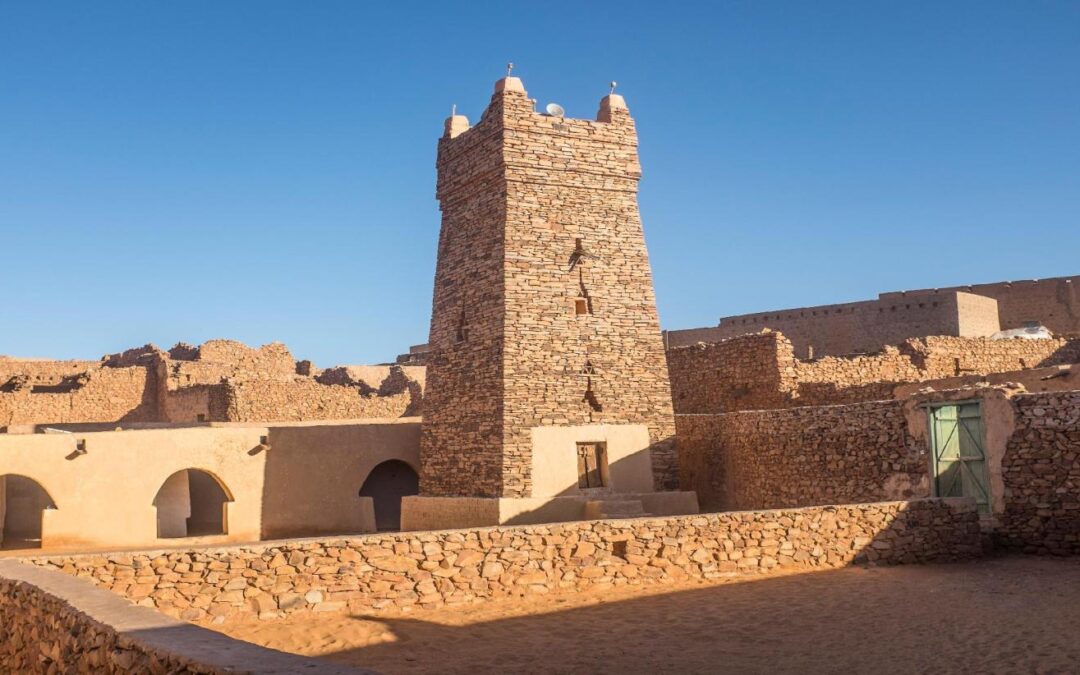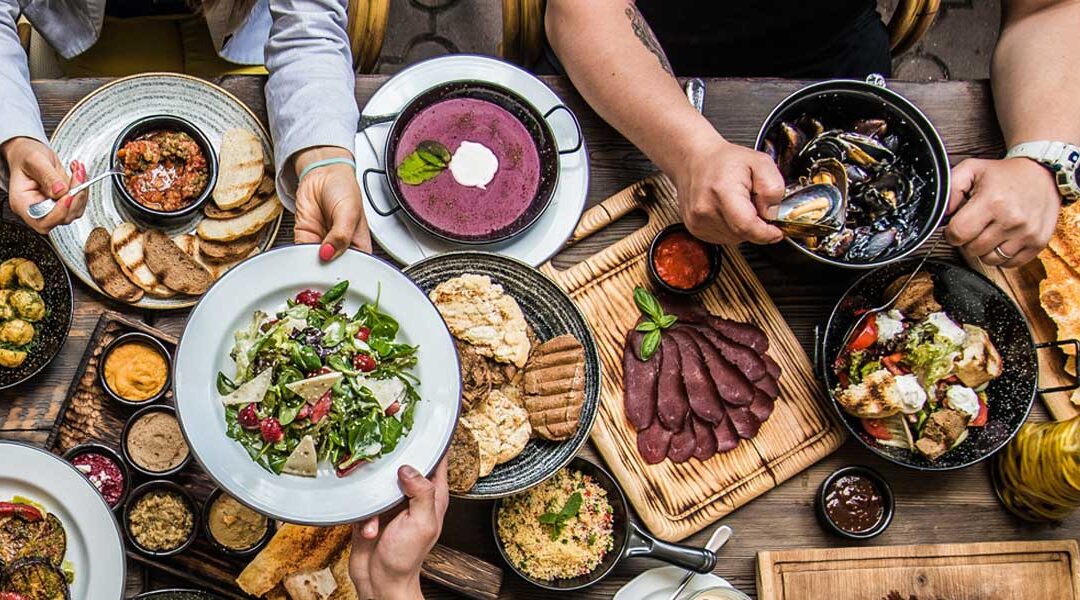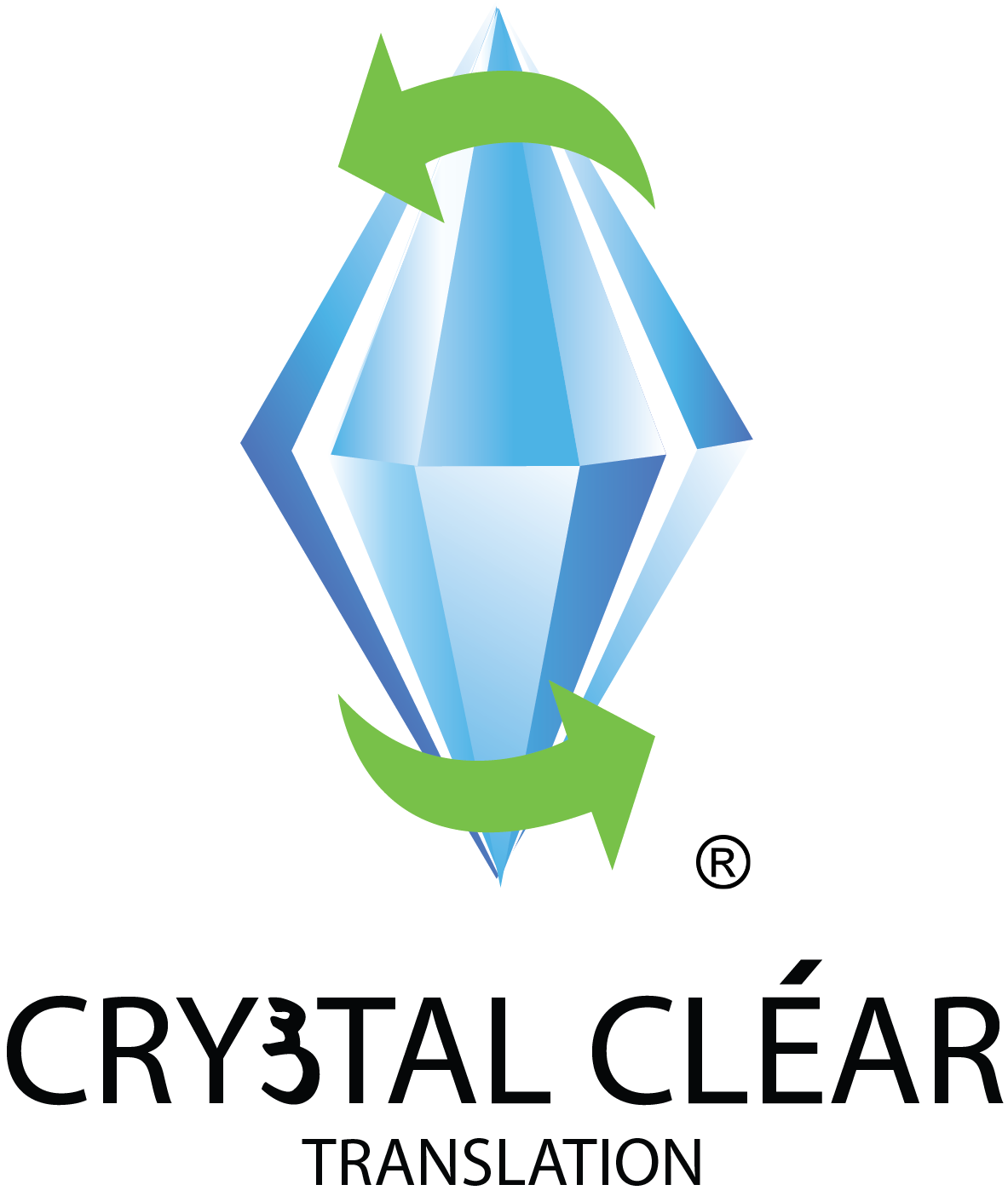
by Hammed Sonny | Sep 23, 2024 | Africa, Arab, Multilingualism
The sovereign state of Mauritania lies within Northwest Africa. With a strong cultural history and a population of 4.4 million, a wide variation of languages is spoken throughout the region; including larger official languages, smaller regional languages and dialects that apply to certain ethnic groups.
The simplest way to explore the rich lingual background of the state is to break it down into sub-categories; Afro-Asiatic, Niger Congo, Berber and foreign languages. Each dialect has an important role within Mauritania.
Afro-Asiatic languages
The languages in this family play a vital role within the state, with Arabic being considered an official language.
Arabic
Arabic is the official language of Mauritania. Typically, the modern standard variation, Arabic is used widely within the government and media. A great proportion of the Mauritanian population are Muslim- meaning that Arabic is heavily utilised and recognised by the majority of citizens.
Berber
The Berber language dates back to earlier times, when at this point it was used widely. Since then, it tends to only be spoken within southern Mauritania. In this day, there are thought to be only 200 speakers of Berber language in the region.
Niger-Congo Languages
Throughout Mauritania, there are small ethnic clusters who speak their own ethnic languages. A lot of these come under the umbrella of the Niger-Congo language family. These include Wolof, Soninke, Bambara and Pulaar.
French
French is an incredibly popular language throughout Mauritania. There are approximately 705,000 speakers within the state. A large proportion of the population are able to understand French to a certain degree, or even speak it natively. The use of French dates to the French colonial rule in Mauritania.
Final thoughts
Within Mauritania the rich cultural background makes for a versatile and varying array of languages. The language spoken natively may depend upon the region you are in, however, most of the population are able to decipher the use of Arabic- meaning this is the lingua franca of Mauritania.
Do you require our services?
Should you need an Arabic interpreter or translator, visit Crystal Clear Translation for a quote.

by Hammed Sonny | Sep 16, 2024 | Asia
India has an extensive history of being a heavily multilingual country. With a growing population of 1.3 billion citizens, India boasts a vast level of diversity. With this in mind, it becomes extremely common for native individuals to possess the ability to understand and speak in more than one dialect.
The varying array of languages has over the decades become compulsory in the growth and development of the Indian community. Interestingly, many Indian citizens use the language they speak as a distinct way of defining their identity.
Indian Languages- In Numbers
According to the 2011 census, there are approximately one hundred and twenty-one languages that are spoken as mother tongue- meaning that this is the first language a person uses. However, only twenty-two of these are deemed as official.
Assamese, Bengali, Bodo, Dogri, Guajarati, Hindi, Kannada, Kashmiri, Konkani, Maithili, Malayalam, Manipuri, Marathi, Nepali, Oriya, Punjabi, Sanskrit, Santhali, Sindhi, Tamil, Telugu and Urdu are the official twenty-two in accordance with the Constitution of India. Out of all the listed dialects, Hindi is the most prominent, with around 41.03% of Indian natives speaking it as a first language and approximately 56% as a second.
The English Language
Despite attempts to stop the use of English as a language within India, it is still used widely within educational and business settings to this day. Although Hindi is at the forefront, those who were unable to speak it with ease much preferred English interpretation. It is now the case that English is used in conjunction with Hindi within the education and business sectors. This was down to an outcry from many individuals which resulted in radical political protests. Its important to note that English is spoken more commonly as a second or third language as a pose to first, according to statistics around 13% of Indian population speak it as their second language.
The derivation of English being more widely spoken, and the continual increase of doing so, has resulted in an influx of international companies- with the language being used commonly within offices and many other socioeconomic establishments.
Multilingualism in India: Day to Day Life
Multilingualism within in Indian community is rife. There are ample benefits to the broad structure of the extensive menu of local parlance. As we discussed earlier, the prevalence of Hindi and English being spoken in official and professional contexts constitutes for more than half of first and second languages. Whereas an ample proportion of the community speak in another language. Ultimately, the area of India that you are in will dictate the language that is spoken. For example, a resident of Manipur will typically speak Manipuri, or, alternatively a person from Delhi is likely to speak Hindi as mother tongue. With twenty-eight states, India is vastly organised in line with linguistic parameters.
Conclusion
With all these factors in mind, it is apparent that multilingualism within India is strongly influenced by political matters. The language you speak seems to be just as important in defining your status as religion or cultural beliefs. Whilst some languages are more prolific than others, each one goes a long way in branding India as a highly diverse, multilingual country.
Should you feel you would benefit from one of our interpretation or translation services, get a quote from Crystal Clear Translation.

by Hammed Sonny | Sep 2, 2024 | Africa
The Democratic Republic of Congo is a hugely diverse country. There are thought to be around 242 known languages. 62 of these are utilised within the region, with only a few being recognised as official languages. The three most used languages are French, Kituba and Lingala.
Official Language
French is the official language of the Congo. Out of the entire population, only 30% speak French fluently, however a greater proportion are able to understand it. The vast majority of these French speaking citizens live within urban areas of the country.
French is used typically in work settings which include the government and media. French is a highly respected language throughout the Congo and it is taught to some degree in schools.
Despite its official status, more people tend to speak in ethnic languages, native to the country.
Lingala
Lingala is a trade language that has grown in popularity across the country. It is mainly spoken in Eastern and Northern pockets of the Congo. To this day it is still used for trade purposes but now also heavily spoken in education and administration settings.
Lingala is divided into two sub dialects: Standard Lingala and Spoken Lingala. Standard is typically used in more formal settings such as the media and spoken is saved for day-to-day use.
The language is quickly growing in status with more and more people adopting it as their second tongue.
Kituba
Kituba accounts for the largest ethnic language in the Congo. Approximately 50% of Congolese people speak this language to some extent. As a national language, it has status within parliament and educational institutes.
Due to its high prevalence, Kituba is widely understood by a great proportion of the countries people.
Small minority languages
As always, within such a diverse and cultured region, there are multiple other languages considered as minority dialects. In the Congo, there are around 60 smaller languages spoken in clusters dependant on region. Many of these belong to the Bantu language family and include: Kiteke, Koongo and Baganda, to name a few.
Each small ethnic group has their own language that they will speak natively.
Final Thoughts
Although French is considered Congo’s official language, it is clear to us that ethnic and regional languages override the official tongue. This just goes to show how influential culture and diversity can be within a country.
Do you require an interpreter or translator in French or Lingala?
If so, visit Crystal Clear Translation for a quote.

by Hammed Sonny | Aug 5, 2024 | Languages, Multilingualism
Daunting in its own right, the idea of job searching can come equipped with a lot of stress for an individual. From writing your CV, sending in applications, or even beginning your first day in a new job, perhaps the most important part is the interview. That time old formality of showcasing yourself to an employer and telling them exactly why they should recruit you over any other candidate. Even in your native language this could be a challenge. Now, imagine you are about to go through that entire process in another language… maybe a job with a foreign company has taken your fancy? Or perhaps you’re a graduate set on bagging a job abroad. Whatever the reason requiring you to take your interview in another tongue, here are a few pointers to set you on the right tracks.
Listen carefully
It seems that listening with care to your interviewer could be the most crucial part to success, even more so when interviewing in a language that is not your mother tongue. To improve the levels of communication, never fee afraid to request that the interviewer speaks slightly slower to accommodate you. Once the question is asked, take a minute to think over what was asked before you execute your answer. Identify any words you seem as key words and be sure to address these clearly in your response.
Honesty is the best policy
When it comes to language, it can be a bad idea to overestimate your skills. Be honest with yourself and more importantly your employer. This seems to be something to address way before your interview, be clear about your levels of proficiency in your CV and application. Ensure your employer knows exactly what they are getting from you.
Do your research
Doing your research can set you strides ahead if it’s done correctly. More often than not, most organisations will ask you similar questions during the interview process. So, if you like to be prepared there is no harm in sourcing these questions and preparing answers to them in the target language. This way, you minimalize the chance of any nasty surprises.
Immerse yourself into the language pre interview
Possibly a day or so before your interview, you could try completely immersing yourself into the language. From listening to music in the language, watching tv or interviews or talking in it where possible, total language immersion can help you pick up common idioms and gestures which could really impress your interviewer!
Final thoughts
In order to prepare for your interview, time and effort can pay off. By following and considering these simple steps you can set yourself up for success! Bagging a job can go way beyond what is on your CV, as 9 times out of ten an employer is more interested in the person behind the document.
If you require a language translation service, visit Crystal Clear Translation for a quote.

by Hammed Sonny | Aug 2, 2024 | Africa, Asia, Carribean
Without a doubt, the hospitality and catering industries is one of the most lucrative fields in the world. From a quick coffee before your train, to a no expenses spared family meal, we have all experienced dining out at some point in our lives. Luckily, we are never short of options, with a staggering number of different cuisines on offer, from good old British comfort food, to worldwide, exotic meal options- even better that you do not have to leave to country to experience these worldwide flavours!
Over the past years, throughout the UK, several food outlets have risen to prominence on our high streets. From fiery Mexican to vibrant Caribbean foods, there is something for everyone! Which is your favourite?
South Africa- Nandos
Renowned for its south African Peri-Peri style cuisines, Nandos is a sure-fire favourite for many. Founded in Johannesburg, the spicy chicken chain is one of the most popular food outlets on British high streets. In fact, the UK has the most Nandos shops out everywhere in the world, with 392 stores throughout the UK. We love it so much in fact, that the restaurants are pretty much always full! So much so, there are two Nandos branches within one minute of each other so help combat the heavy queues.
Asia- Wagamamas
Wagamamas offers its diners the chance to experience Japanese and Asian inspired dishes with a modern British twist. Founded in 1992, Wagamamas has fast become one of the most popular dining locations in the UK. It is said that from 2018 to 2019, the restaurants annual turnover was as high as 342 million pounds! From its authentic Ramen dishes to its Asian inspired side dishes, the restaurant has something for everyone. More often than not, most major towns and cities will have a Wagamamas close by, with statistics showing that there are approximately 132 stores in the UK.
Mexico/Texas- Chiquito
Fusion foods are highly popular throughout the world. Perhaps one of the most affluent being Tex-Mex cuisine- a bold fusion of Mexican and Texan foods, and the result seems to go down a storm with British consumers! Chiquito was founded in 1989 in the UK, offering its diners the best of both worlds, with a fiery menu of Tex-Mex goods. The 33-year-old food chain was once described as the UKs best Tex-Mex food joint, proving just how much us brits love our fusion food.
Italy- ASK Italian
Offering quintessential Italian foods, ASK Italian has become a restaurant staple in the UK. Founded in 1993, ASK has evolved into one of the most popular Italian food chains. Its inspired cuisine offers diners an authentic Italian dining experience at an affordable price. There are 120 UK wide outlets serving their food, and with people flooding into the restaurants daily, it remains an increasingly popular location for Italian food.
Caribbean- Turtle Bay
Turtle Bay is a vibrant outlet which offers the much-loved flavours of Caribbean food. Fusing a selection of authentic flavours, the outlet has created ab outstanding menu which we just can’t get enough of. The warm, fun-loving atmosphere makes for a relaxed dining experience, which keeps its visitors coming back. Turtle Bay is perhaps the leader in terms of popular Caribbean cuisine joints in the UK, with hundreds of thousands of visitors each year.
Final Thoughts
It goes without saying that there are ample locations to enjoy your preferred cuisine out and about. Regardless of Covid-19 measures, the catering and hospitality industry remains rife thanks to its diversity and choice. There is something out there for everybody, and as the options continue to grow, so does the economical scale of the field.
Should you require a translation or interpretation service, visit Crystal Clear Translation for a quote.






